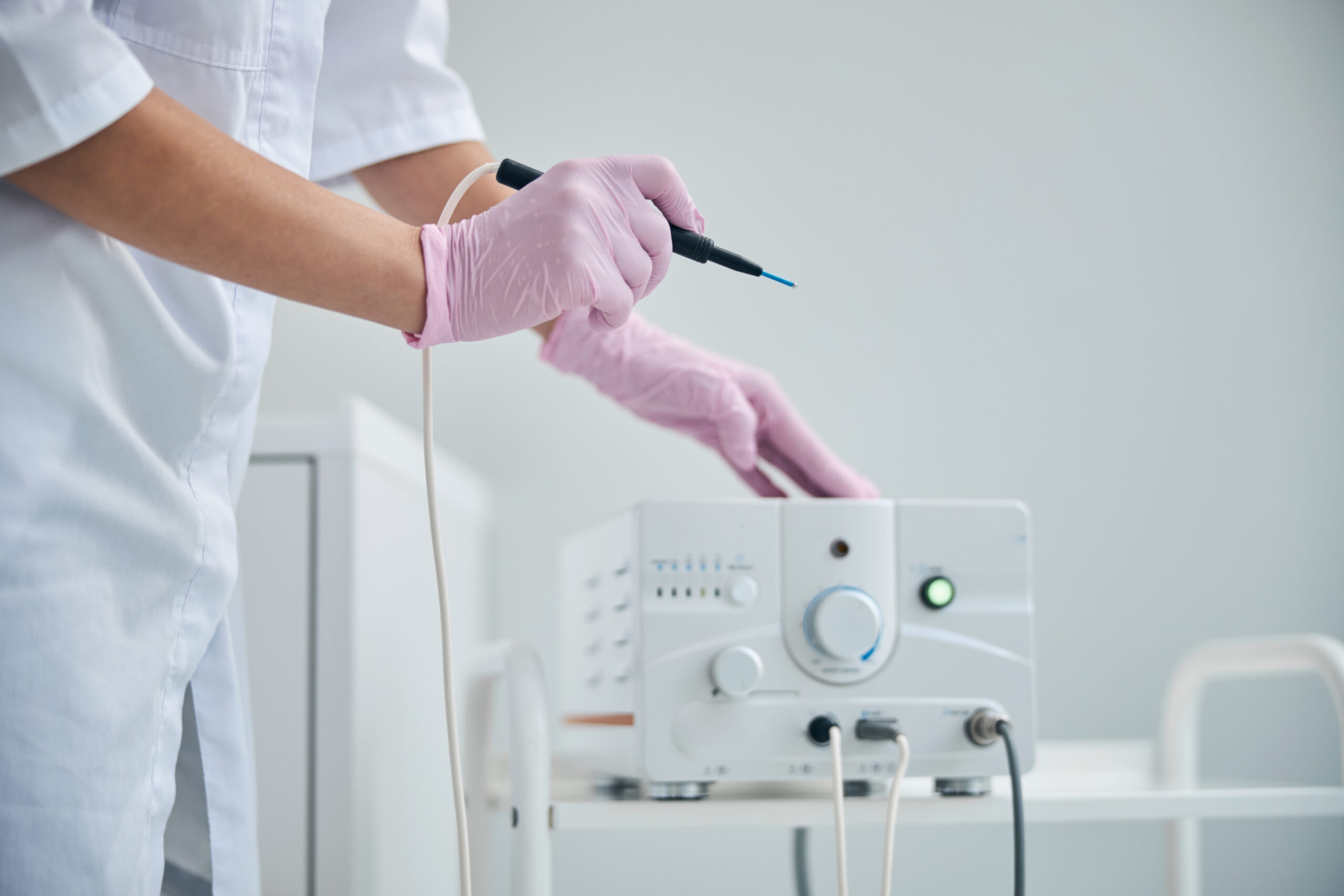A hyfrecator pen is a tool commonly used in electrosurgery with conscious patients. Rather than needing a surgical theatre for this application, an office or appointment room is suitable for such a mild procedure, and various medical specialists can perform it. Dermatologists, for example, commonly use hyfrecator pens as they are handheld instruments that work well with small blood vessels, which is why they’re well suited to skin operations where blood vessels are thinner.
As such, the pens prove useful in a selection of issues related to the skin, destroying targeted areas of tissue and restricting any bleeding in minor surgeries.
Hyfrecator pens are an essential tool for many surgical and medical professionals. In this article, Team Medical Supplies explores the common scenarios where a hyfrecator pen would be used.
What Does a Hyfrecator Pen Do?
Hyfrecator pens provide the ability to perform near-bloodless procedures to burn or remove growths and other issues by transferring electrical currents to a patient’s tissue. This reduces the chances of infection and complications, and allows patients to heal faster with less scarring. These are some common procedures that use a hyfrecator pen, though this list is non-exclusive and there are many more.
When to Use a Hyfrecator Pen
Removing skin tags
Hyfrecator pens are frequently used to remove skin tags from patients. The pen allows for a quick and simple procedure where the electrode burns the skin tag cells so it separates from the skin.
Treating skin lesions
Certain skin lesions, like cherry angiomas or capillary angiomas, create no symptoms and or have any malignant attributes. Still, some patients like to have them removed due to their unsightly appearance. These pens effectively remove these from the skin in a simple procedure.
Wart removal
Warts are commonly removed using a hyfrecator pen because it’s an effective and safe instrument to apply to various parts of the body. Removing warts through this method can be done in a single treatment and a matter of minutes. Often this is paired with a local anaesthetic, so the patient feels no pain.
Basal Cell Carcinoma
Basal Cell Carcinoma is a form of skin cancer developing on the skin after prolonged sun exposure. It is often removed with a sharp dermal curette by scraping the area, but medical teams also apply a hyfrecator pen using an elliptical excision, transforming the operation into a virtually bloodless and clean procedure. When cancerous tissue is softer than the skin around it, this method can effectively target the cell itself, but when it grows harder or larger in size, the pen may prove ineffective as a treatment option.
Pyogenic Granuloma removal
Pyogenic Granuloma is a benign vascular tumour that can be removed with a hyfrecator pen, given how they respond well to electrocautery treatment. Medical teams might first remove the raised part of the tumour with a scalpel and scrape the base with a sharp curette. Once all the tissue is removed through these instruments, the electric current can be applied to stop the bleeding and improve recovery efficiency.
Nasal surgery
Nosebleeds are usually caused by exposed blood vessels within the nasal cavity. Medical hyfrecator pens are sometimes used to treat patients who suffer from regular nosebleeds through a nasal procedure. A medical professional can use a pen to administer this quick and simple procedure with a local anaesthetic. Medical professionals typically prefer to work in an operating room with general anaesthetic for more complex nasal surgeries, such as sinus surgery.
Shop with Team Medical Supplies Today for Hyfrecator Pens & More
Browse our full selection of hyfrecator pens and electrosurgery equipment available from Team Medical Supplies today. Speak with our team today to learn more by calling 1300 22 44 50 or submitting an online enquiry form.

